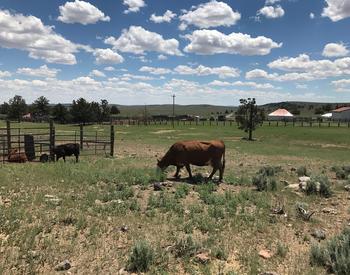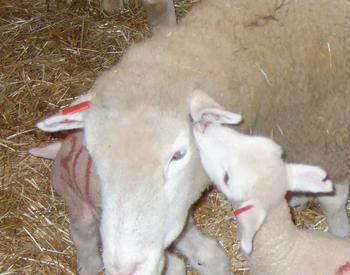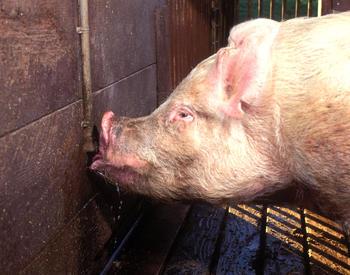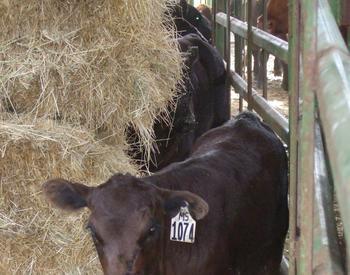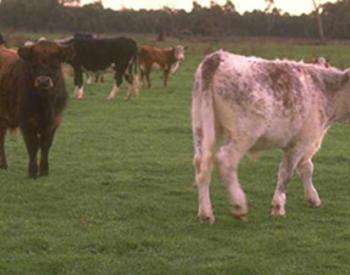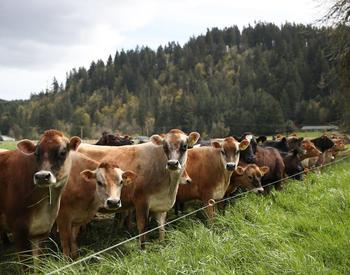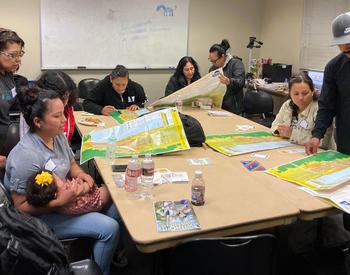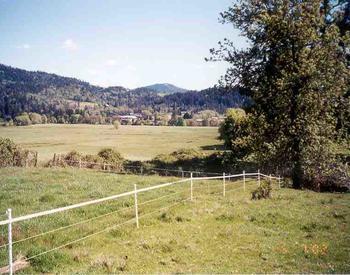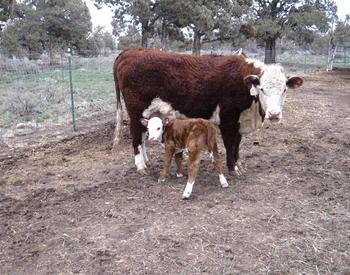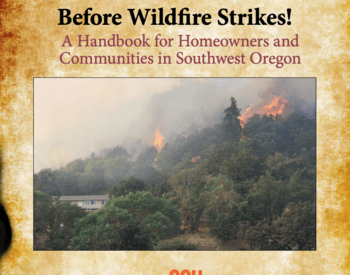CORVALLIS, Ore. – Up and down the western part of the state, Oregon State University Extension Service is assisting with livestock rescue efforts as thousands of Oregonians flee wildfires.
Fairgrounds in at least 12 counties are being used as intake sites for horses, cattle, pigs, poultry and other animals. When the fires started raging on Tuesday, OSU Extension employees started preparing barns and other buildings for animals, in addition to sorting through donations of food and water. Since then, they’ve been working day and night.
“One of the defining characteristics of OSU Extension is our strong bond with the counties in which we work,” said Anita Azarenko, interim vice provost for the Division of Extension and Engagement. “Extension always has a strong presence at county fairs, and in some counties our Extension office is co-located at the fairground. Assisting in these wildfire relief efforts is a natural fit for us and it’s consistent with our mission to serve all Oregonians.”
On Tuesday afternoon, Michele Webster, office manager and Linn County local liaison, responded to a request from a county commissioner to recruit 4-H youth and volunteers to help people who were going to bring their livestock to the Linn County Expo Center in Albany. The fairground had been designated as a fire evacuation shelter.
“Pigs apparently had gotten loose already,” Webster said. “I sent an email to all our 4-H leaders, made a few calls and put out a call for volunteers on our county Facebook account. At 3 p.m., I shut down the office and headed to the fairground. I have zero livestock experience, but I was able to help coordinate and create a spreadsheet to track which animals came in and where they were located. We had an overwhelming response of volunteers that wanted to help.”
More than 600 animals are now sheltered at the fairgrounds and space is still being cleared for more, said Webster, who pulled a 14-hour shift on Wednesday and brought in her son and daughter-in-law as volunteers. On Wednesday and Thursday, she worked hand in hand with Linn County resident Shannon Braunberger, who saw the Facebook post, and stayed until 11 p.m. on Tuesday and 9:45 p.m. on Wednesday.
By Friday, Shelly Boshart Davis, a Linn County small business owner and state representative, was heading the effort.
“We could not have done this without Shannon, Shelly, the volunteers and the 4-H folks with experience in handling animals,” Webster said.
In neighboring Benton County, a total of 80 4-H youth members and adult volunteers took in 180 animals at the Benton County Fairgrounds, including those that were diverted from other sites that were full.
"All animals were returned to their owners, well-rested, well-exercised and well-fed," said Carolyn Ashton, 4-H youth development coordinator in Benton County.
In Yamhill County, Extension staff, faculty, 4-H Volunteers and youth started preparing the livestock barns Wednesday at the Yamhill County Fair and Event Center. They helped prep pens for small livestock and cages for rabbits, poultry, and other small animals. The had water ready for incoming horses, and their efforts have continued daily with the feeding and caring of evacuated animals.
Kelli Watcherson, administrative office manager and local liaison, printed and laminated about 200 stall cards for horses and small livestock.
“We delivered dry erase markers and assisted attaching the stall cards so incoming volunteers could easily see and mark feeding/cleaning/health conditions and date and time,” Watcherson said.
Yamhill has used its Facebook account to share specific needs for volunteers and supplies, updates from county entities and regional availability information, she said.
“We are also focusing on assisting the McMinnville Chamber of Commerce to get the word out about locations available for displaced people coming into the area,” she said. “Our goal is to assist the fairgrounds and county with correct, timely information. We’re striving to be a ‘boots on the ground’ team when needed, and a trusted source of information.”
Next door in Marion County, more than 600 volunteer openings to assist with the effort at the Oregon State Fair and Expo Center were filled in less than a day. At its peak, the fairgrounds held about 1,100 evacuated animals. Most fo the care was provided by 4-H youth and their families for nine days, and some for as long as two weeks. About 650 4-H volunteers accumulated 2,400 volunteer hours.
In Washington County, by midnight Thursday 4-H youth, working day and night, helped take in more than 330 animals at Westside Commons in Hillsboro, home of the Washington County Fair. Most of the animals were cattle but there were horses, miniature horses, donkeys, llamas, goats, sheep, turkeys and chickens. They also took in pigs – including some sows with young piglets.
“Washington County 4-H livestock volunteers were absolutely wonderful and were a crucial part of the operation,” said Leah Perkins-Hagele, venue manager for Westside Commons. “The kids and parents did everything from loading bedding into pens, filling water buckets, feeding animals and even soothing stressed scared animals.”
Just to the west in Clatsop County, Extension’s Jared Delay, a 4-H education program assistant, headed up a caravan of 11 trucks and trailers that went into evacuation zones in Clackamas, Marion, Linn and Washington counties. They evacuated a total of 213 cows, horses, sheep, pigs and poultry – and a boar weighing in at 1,200 pounds. The crew traveled a total of 4,248 miles over four days.
Upon learning of the effort, the Samuel S. Johnson Foundation donated $5,000 to OSU Extension.
On the south Oregon coast, Curry County 4-H youth and volunteers prepared the Event Center on the Beach for the potential need for livestock evacuation. Early Wednesday morning, Ruth Dixon, 4-H education program assistant, learned that local facilities in nearby affected communities were filling up, so she quickly gained approval from local authorities and fair management to set up the Gold Beach fairground with boarding pens and cages.
Learning from their past experience during the Chetco Bar Fire in 2017, they were able to organize and prepare the facility within two days. It’s now being advertised to surrounding communities in evacuation levels 1, 2 and 3.
“During the Chetco Bar Fire I was able to gather numerous volunteers and we worked together to run the shelter for over a month,” Dixon said. “We cared for more than 20 pigs, 40-plus goats, eight horses and too many poultry to count. Our 4-H youth and volunteers are involved in community service and are able to jump right in and help."
